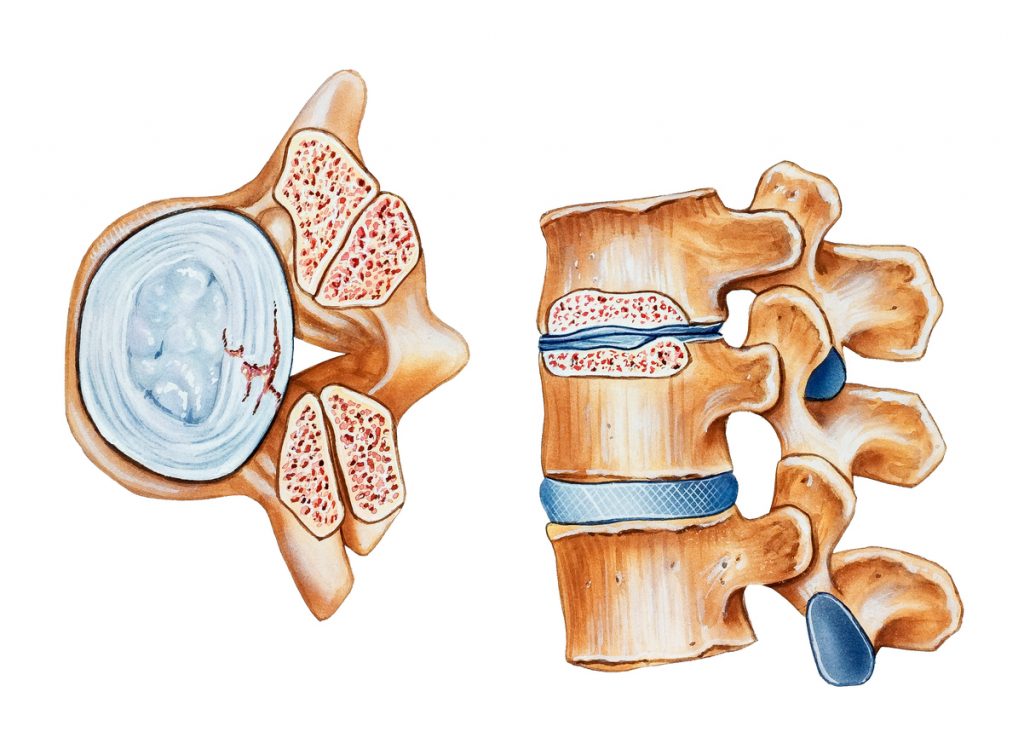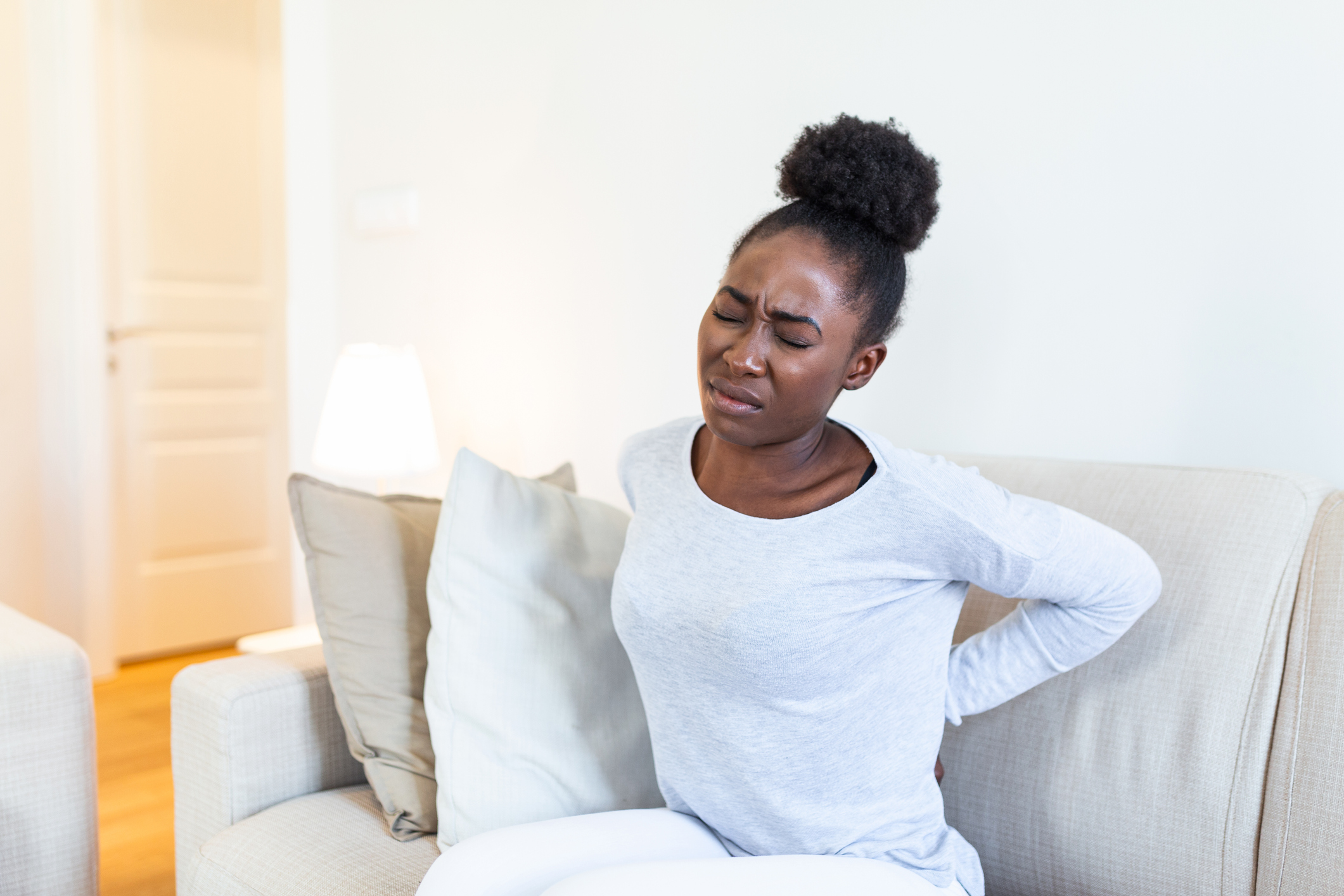Spinal stenosis is a narrowing of the spaces within the spine. The bony openings, or foramina, can narrow and compress the nerves that go through the spinal cord. Inflammation or compression of a spinal nerve is known as foraminal or lateral stenosis. If the spinal cord itself is compressed, the diagnosis is central canal stenosis. Low back pain occurs when there is stenosis in the lumbar spine.
Causes
Instances of spinal stenosis increase with age. Most cases affect people over the age of 50. The wear and tear damage caused by osteoarthritis can cause narrowing of the foramina. Bone spurs may grow into the spinal canal, causing inflammation and compression. A spinal injury or trauma can cause fractures of the vertebrae, resulting in inflammation and damage to the spinal canal. Herniated discs between the vertebrae may pinch or compress the nerves or the spinal cord. Ligaments that thicken or become stiff as we age can also bulge into the spinal canal. In rare cases, a tumor may compress the nerve. Although lumbar stenosis is the most common type, stenosis can also occur in the neck, or cervical spine.
Symptoms
Spinal stenosis may not present any symptoms initially. Symptoms often start gradually and get worse over time. The pain may be intermittent, as opposed to constant. Spinal stenosis in the low back may cause numbness or tingling in one leg or foot. There may be weakness in the leg or a drop foot. Pain may eventually shoot from the low back or buttocks down the leg, as in sciatica. A person may suffer pain or cramping when walking or when standing for long periods of time. The pain may be relieved after sitting, resting, or bending forward. Sometimes bladder or bowel incontinence develops, and the pain may spread to the back.
Diagnosis
A physician will thoroughly review the patient’s medical history. The physical exam will include tests for range of motion, strength, sensation, and reflexes. The doctor may order special imaging tests such as an MRI or a CT scan with myelography.

“Spinal stenosis. The top view (left) shows the superior articular process of the inferior vertebra, the inferior articular process of the superior vertebra, and the narrowed spinal canal. A side view (right) shows a damaged intervertebral disc with a loss of disc height and narrowed lumbar vertebrae (top) and a normal disc.(bottom).”
Treatment
Many cases of lumbar stenosis can be treated successfully with non-surgical methods. Physical therapy exercises can strengthen the core muscles and provide support for the spinal joints. Stretching and range of motion exercises can improve mobility. The patient may be instructed in specific movements that are designed to take pressure off the nerve root. Pain medications can give the patient relief from symptoms. Epidural injections may be recommended in more severe cases. The patient may have to make modifications to some physical activities.
Surgery may be necessary if non-surgical treatments have not helped. Surgical options may include laminectomy, foraminotomy, or discectomy and fusion. The procedure recommended will depend on what is causing the spinal or nerve compression. The goal of the surgery is to decompress the affected nerves so that they may start healing.


